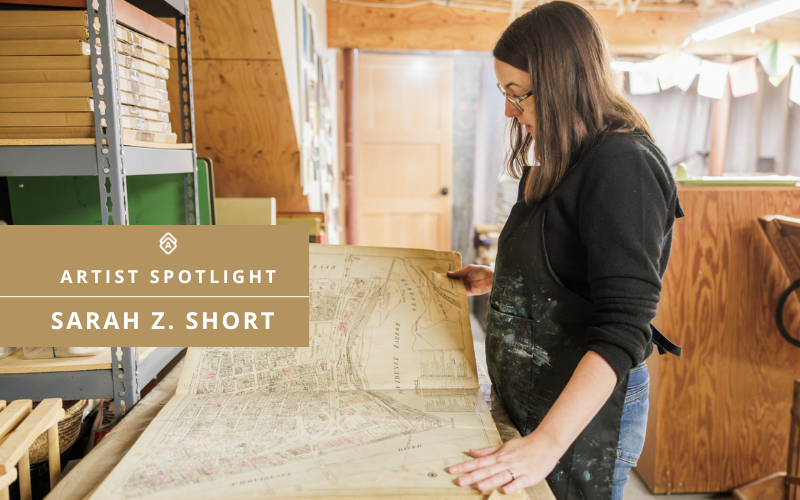
“I look for handwriting, readers’ marks, and great type.”
Artwork Archive's Featured Artist Sarah Z. Short cuts into pages that already hold a story. A former English teacher turned collage artist and printmaker, Short works from her studio in the woods of Rhode Island, surrounded by stacks of paper most people would overlook.
Short creates almost entirely with found paper and ephemera, pages that wouldn't be considered valuable in the traditional sense, but are underlined, annotated, and often yellowed with age. But for her, those qualities are what make them worth using. She gravitates toward paper with interesting typefaces, visible signs of use, and the kinds of textures that respond well to her process. Many of her pieces begin with wooden type printed onto discarded book pages. Once printed, the letterforms are abstracted until they lose their meaning.
What’s left is composition. Form. Space. Short’s work is about what the page becomes once it’s no longer trying to be read.
Artwork Archive had the chance to chat with Sarah Z. Short about how she builds her pieces layer by layer, starting with paper scraps and old books and extending to the systems that keep her practice organized. From studio routines to mindset shifts, we explored the habits, philosophies, and tools that keep her work moving forward.
You can see more of her work on Discovery and learn more about her art practice below:
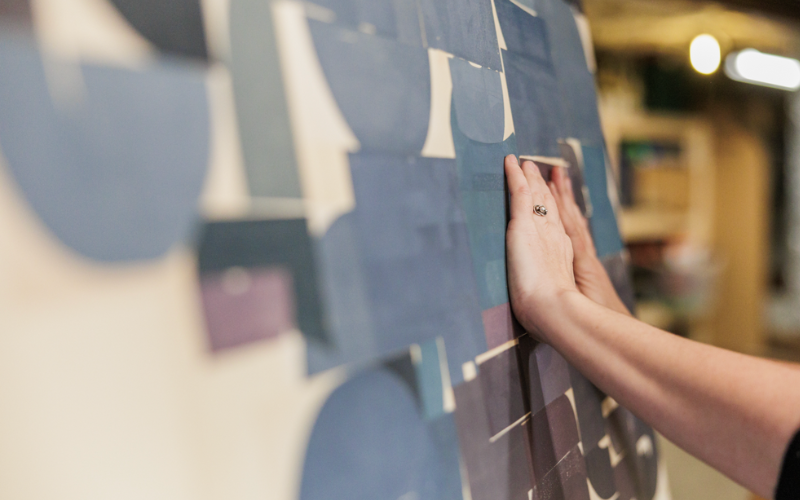 Sarah Z. Short with a WIP in her studio. Photo courtesy of the artist
Sarah Z. Short with a WIP in her studio. Photo courtesy of the artist
Built in Layers
For Featured Artist Sarah Z. Short, the beginning of a piece starts with a tabletop covered with printed vintage paper.
As a collage artist, she starts with stacks of old material and a letterpress. “That’s my favorite part of the process,” she shares, “because it feels like play.” The colors she chooses at this stage set the tone, hinting at which direction the collage might take next. Once she begins assembling a piece, her focus narrows. She works on one collage at a time and doesn’t step away from a piece until it feels finished.
Then, she carries it out of the studio and into her living room, where the lighting shifts just enough to show her what she might've missed. “That’s when I see where reversions are required.” By stepping out of the studio, she gives herself the distance to really see what the piece is asking for.
A Life Spent With Books
Years of reading, teaching, and loving books have trained her eye to see what most people pass over.
“I’m a reader and a former English teacher,” she reveals. “Which means I’ve spent my life with books.” That relationship continues in her artwork. She sorts through yellowed or dog-eared pages for a feeling, reaching for papers with a color that speaks to her, or a texture she knows her hands will return to. She gravitates toward what feels good to work with—“materials that don’t have monetary or artistic value,” and “paper in the colors and quality I know I’ll enjoy working with.”
What she notices most are the human touches: the scratch of a pen, notes scribbled in a margin, faded typography that once meant something to someone. “I look for handwriting, readers’ marks, and great type.”
For Short, repurposing these pages means continuing a narrative already in motion: “I get to extend their stories.” Now they serve a new function, living inside her studio practice.
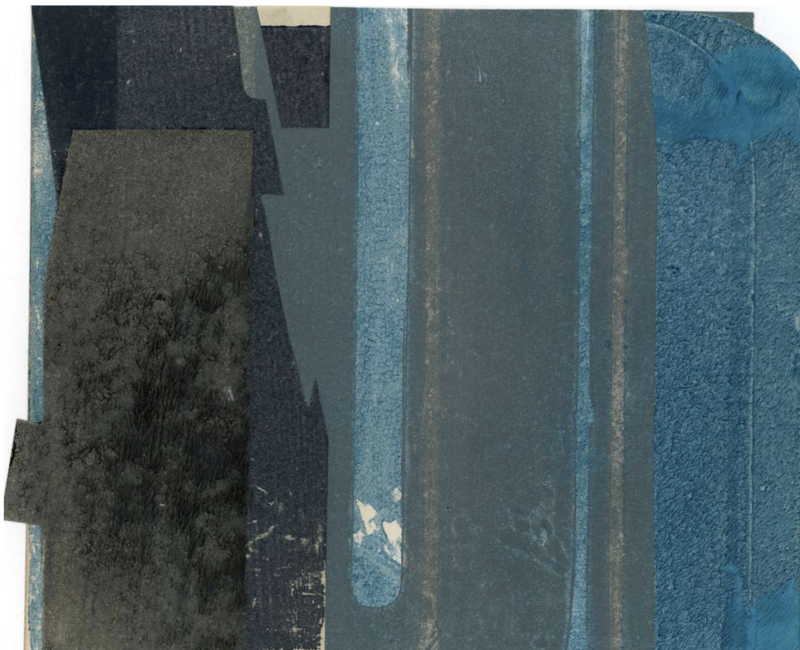
Sarah Z. Short, The Well, 9 x 12 in, 2025
Working with Care and Intent
There’s a kind of responsibility that comes with working from found materials, and Short doesn't take that lightly.
The artist is deliberate about what enters her studio. “I’m careful to use papers from books that aren’t valuable or are works of art on their own,” she maintains. If something feels too rare or meaningful in its original form, it doesn’t get cut up. The same care applies to personal information. Names, letters, addresses—she’ll omit anything that doesn’t feel appropriate to include. “I make sure to obscure handwritten names and addresses and private correspondence.”
And anything that clearly belongs to another artist is off-limits. “I don’t use photographs or illustrations because that is someone else's artwork,” she clarifies.
“I transform my materials to respect the people who created them,” Short states. That principle guides every decision, from what she selects to what she sets aside.
Stories Surface in Surprising Ways
Not every detail in Sarah Z. Short’s work is intentional. Instead, the artist prefers to work by feeling, by balance, by the pace of her own attention. But sometimes the materials say more than she expects.
“There was one piece where I used pages from a railroad accounting book,” she recalls. “And it wasn’t until the piece was finished that I realized I’d abstracted letters so they looked like railroad ties.”
The paper had told its own story.
“Sometimes the history of the paper ends up impacting the piece,” she reflects, “but without me being aware of it until I complete the work.” Short doesn’t go hunting for those connections. But she’s paying attention when they show up. And when they do, they give the piece an unexpected kind of weight. One that feels earned, not imposed.
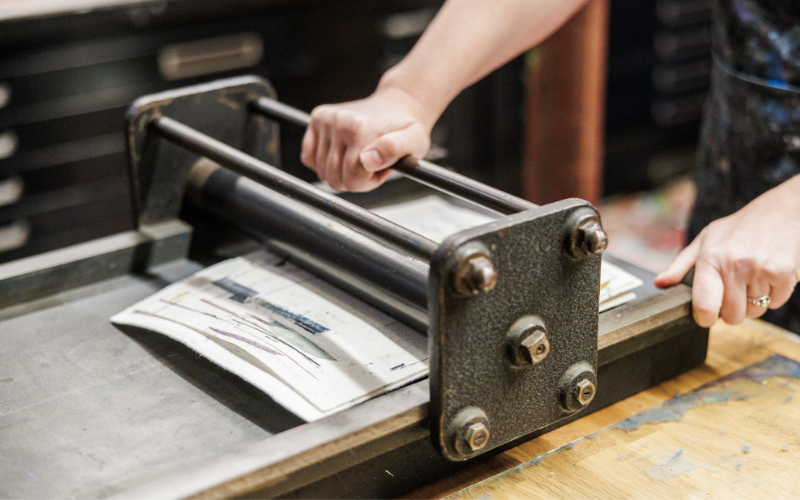
Sarah Z. Short working with her letterpress in her studio. Photo courtesy of the artist
Reframing What It Means to Be an Artist
Mindset matters. And one of the biggest changes in this artist's career came from how she thought about herself.
“I think you need to see yourself as a professional artist who wishes to make an income,” Short offers.
Thinking that way changed how she talked about her work, how she scheduled her week, and how she followed up after a show or sale. Instead of waiting for someone else to take her seriously, she made the decision to take her own practice seriously first. That included learning the business side (even the parts that felt overwhelming at first.)
“Learning how to keep my business bookkeeping organized” didn’t come easily, she admits. But it turned out to be one of the most useful skills she could develop.
Treat Admin Days Like Studio Days:
If you're trying to take your art career seriously, carve out time for your admin work the same way you carve out time to create. Try using Artwork Archive’s Schedule feature to batch your outreach, follow-ups, or record-keeping tasks so they don’t build up. It’s a small shift, but it can change how you approach your week.
👉 Need help setting this up? Come watch our free 101 webinar.
Staying Organized from the Start
Some advice really does just stick. For Sarah Z. Short, one of the most useful things she ever heard from a mentor was to stay organized from day one.
“I followed the advice of my mentors who told me Artwork Archive was essential,” she recalls. "And they were right."
What started as a simple inventory tracker quickly became the backbone of her studio workflow. Now, she uses it to generate Certificates of Authenticity, send digital portfolios to curators, create Consignment Reports for dropoffs, and log submissions, sales, and collector info all in one place.
Private Rooms have become part of her exhibition routine. “I create Private Rooms I can share with collectors when I have solo shows,” she says. These curated viewing rooms help her present work professionally without having to build everything from scratch each time.
Another favorite? Artwork Archive's web embed tool, which gives her the ability to automatically populate her portfolio on her website as she uploads new work. “This allows my collectors to see what I’m working on,” she explains. She shares the link with curators too, especially when they’re looking for something that fits a specific project. It’s a simple tool, but one that makes it easy to keep her work accessible and up to date.
Let Your Portfolio Update Itself:
Tired of uploading images in multiple places? With Artwork Archive’s Wed Embed feature, you can upload your new work once and have it instantly populate your website. It’s one of the easiest ways to keep your site up to date without adding another task to your list.
👉 Here's the step by step guide to getting that set up. (No tech skills required)
Her Advice? Start Now
Sarah Z. Short doesn’t believe in waiting until later to take your practice seriously.
“Learn to use Artwork Archive,” she suggests. “It will make much of what you need to do easier.” But the bigger advice is about showing up. Build systems. Track your work. Make your career visible to others, and to yourself.
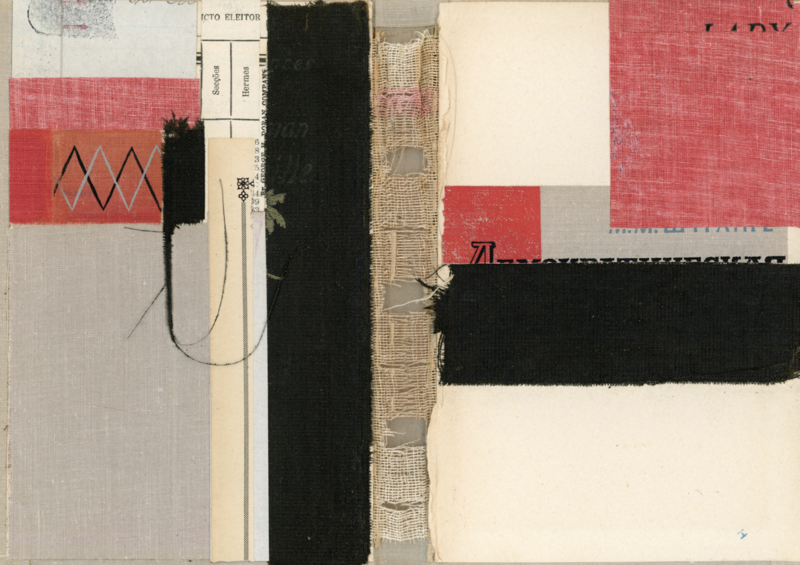


![[GUIDE] The Best Artist Grants & Opportunities in September 2025](https://d1zdxptf8tk3f9.cloudfront.net/articles/2034/large/Nicky_Myny__-_September_Opp_Guide_Image.png?1749836260)


